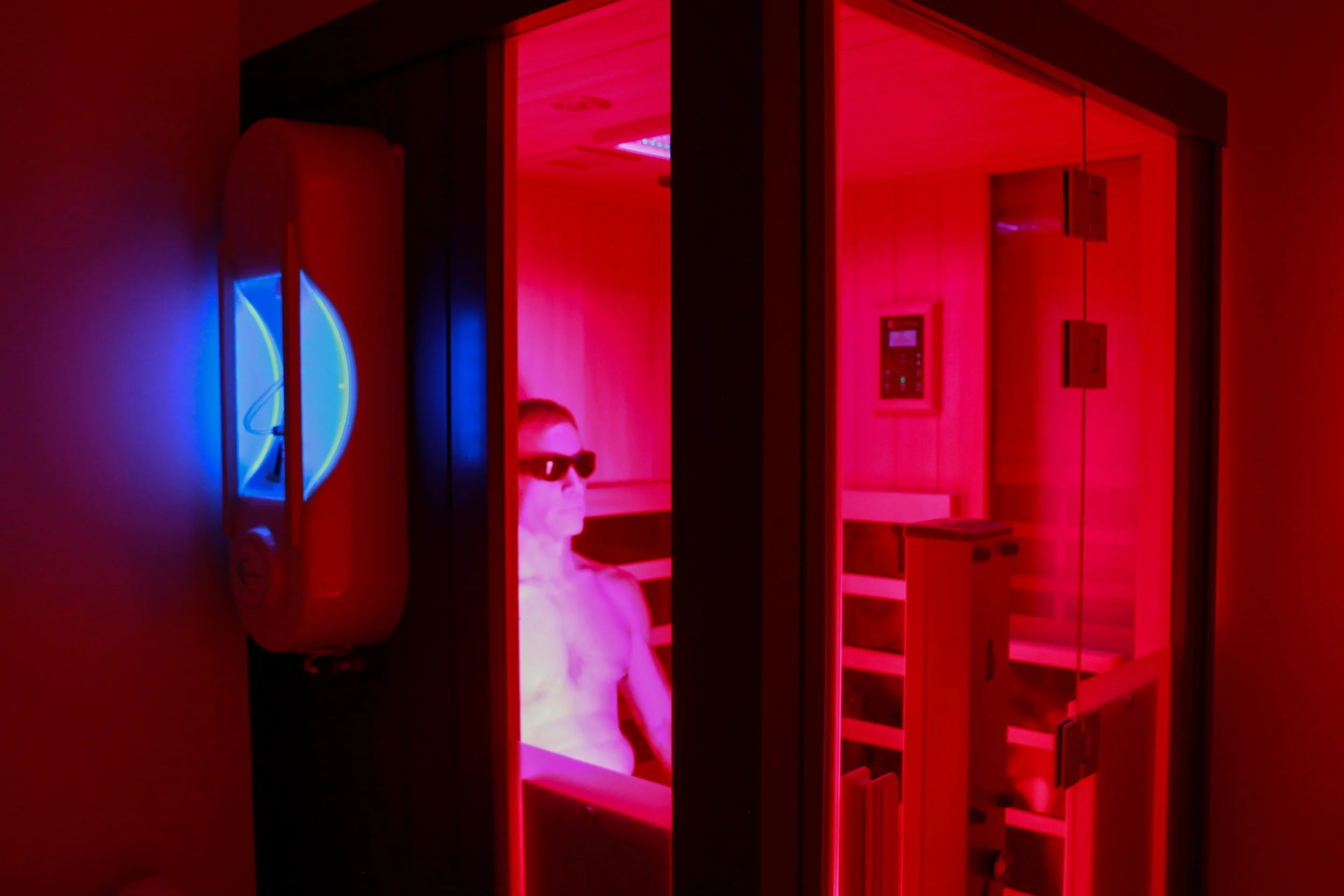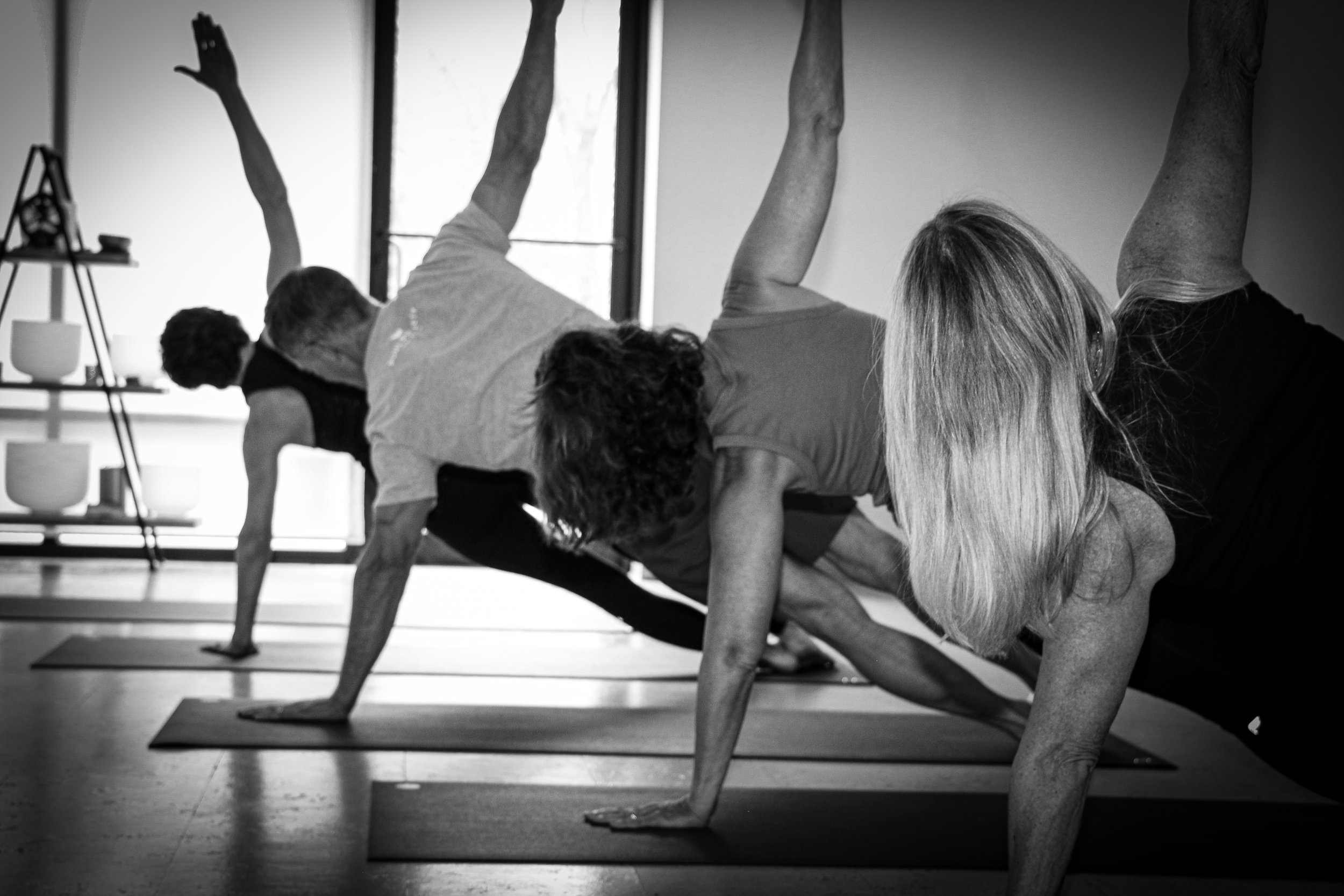What's the deal with the breath?
Why We Focus on Breath
The Science Behind Yoga, Cold Plunge + Sauna
By Julia Collins
This morning, I was talking with someone who hasn’t practiced yoga or recovery therapies about their benefits, and he asked, “What’s the deal with the breath?”
Good question, I thought, and an even better blog post.
If you’re like most people, you don’t give your breath much thought. Your body does it automatically; end of story. But if you’ve practiced with us at Soul Society Yoga, you’ve probably heard the same reminders again and again:
“Inhale… soften your belly.”
“Exhale… let your shoulders melt.”
“Stay with your breath.”
It’s easy to think of breath cues as just a way to help you move through class more mindfully—but the truth is, your breath is doing so much more. It’s not just a yoga thing. It’s a human thing. Your breath is the gateway into your nervous system, your stress response, your inflammation levels, and even the way your heart and brain communicate.
And whether you’re flowing on your mat, stepping into our cold plunge, or settling into the warm embrace of the HaloSauna, your breath is the tool that helps your body shift from chaos into calm. It’s intricately linked to the why behind these modalities.
This isn’t just ancient wisdom (though yogis have known it for thousands of years). This is science—beautiful, fascinating, measurable science.
Let’s explore the “why” together.
Breath: Your Built-In “Reset Button”
You’ve probably heard us talk about the vagus nerve—the long, wandering nerve that runs from your brainstem down through your face, throat, lungs, heart, and gut. This nerve is the control center of your parasympathetic nervous system, also known as:
Rest and Digest. Heal and Restore. Exhale and Let Go.
When you breathe slowly and deeply, especially with a soft belly and long exhalations, you stimulate the vagus nerve. Think of it like a gentle massage to your nervous system. Research shows that this kind of breathing:
Lowers heart rate
Lowers blood pressure
Reduces cortisol (your main stress hormone)
Improves digestion
Boosts your emotional regulation
Increases heart rate variability (HRV), a marker of resilience
In other words, breath gives you access to parts of your physiology you normally can’t control.
As the classic book The Science of Breath explains, breath is the bridge between body and mind. Modern research is finally catching up to that idea: slow diaphragmatic breathing activates the vagus nerve, increases HRV, and moves the body from “fight or flight” to “rest and digest.” It’s one of the quickest ways to communicate to your system, “I am safe.”
And when your body feels safe, it can heal.
Why Yogis Have Always Prioritized Breath
In yoga, breath is called prana—life force. It’s the anchor of the practice, the thread that ties movement, awareness, and presence together.
But beyond the philosophy, breath has real, measurable effects:
1. Breath Reduces Stress Hormones
A single slow-breathing session has been shown to significantly lower cortisol. Longer-term breathwork improves mood, reduces anxiety, and supports better sleep.
2. Breath Improves Heart and Lung Function
Deep breathing strengthens the diaphragm, increases lung capacity, and improves oxygen exchange. For people dealing with tightness, shallow breathing, or stress-related tension, this is life-changing.
3. Breath Balances the Autonomic Nervous System
Breathing at about 6 breaths per minute (slow and steady) is shown to rebalance the delicate dance between your sympathetic and parasympathetic systems. It’s like tuning an instrument so it plays beautifully again.
This is why you feel different after yoga—not just stretched or sweaty, but regulated.
Breath + Cold Plunge: Training Your Stress Response
One of the most powerful places to see breathwork in action is during a cold plunge.
When you first get in, your body triggers the “cold shock” response—your breath shortens, your heart rate jumps, and your brain screams, “NOPE.”
But when you soften your belly and slow your breath, something magical happens:
You override your stress response.
You teach your nervous system that not every intense sensation is a threat. You practice staying calm inside discomfort. This builds what psychologists and physiologists call stress resilience—the ability to recover more quickly and stay more balanced in the face of challenges.
Cold plunge research shows:
Stress levels drop significantly 12 hours after a dip
Sleep quality improves
Quality of life ratings increase
Inflammation markers can decrease
The immune system may function more efficiently
Mood may improve due to increased norepinephrine
Even more fascinating: cold exposure paired with specific breathing techniques was shown in studies to blunt the body’s inflammatory response to stress and disease challenges. People who trained with breath + cold produced fewer inflammatory cytokines and experienced fewer “flu-like” symptoms in controlled studies.
So when we teach belly breathing in the cold plunge, we’re not just helping you “get through it”—we’re literally helping you retrain your nervous system.
Every inhale, every exhale, is a rep.
Breath + Sauna: Bringing Heat, Heart, and Healing Together
Heat works on the body in a different—yet equally beautiful—way.
When you enter the sauna, your core temperature rises. Your heart rate increases to levels similar to light cardio. Blood vessels dilate. Circulation improves. You begin to sweat, detoxing through your skin.
But the breath is what makes the experience restorative instead of overwhelming.
Pairing slow, nasal breathing with sauna heat:
Helps regulate heart rate
Reduces stress
Supports the parasympathetic system
Allows you to stay centered within intensity
Helps your respiratory system adapt and strengthen
And the long-term studies on sauna use are jaw-dropping.
Regular sauna use is associated with:
Lower risk of cardiovascular disease
Lower blood pressure
Lower inflammation
Better lung function
Improved sleep
Reduced chronic pain
Greater sense of well-being
Lower all-cause mortality
A large Finnish study found that people who sauna 4–7 times per week have a drastically lower risk of fatal cardiovascular events. Think of it as gentle conditioning for your heart and circulatory system.
And just like with cold, breath is your anchor. Breath helps you embrace the heat, soften tension, and stay centered.
Bringing It All Together: Breath as the Thread
Yoga, cold plunge, and sauna might seem like very different experiences—but they share one thing:
Each asks you to meet intensity with presence.
On your mat, breath keeps you grounded through movement and sensation.
In the cold plunge, breath helps you override panic and settle into calm.
In the sauna, breath regulates heat and supports your heart and lungs.
Movement + Recovery + Breath = the Soul Society Way.
These practices remind your body how to return to balance—how to regulate, recover, heal, and thrive.
Breath is your built-in superpower.
Breath is your reset.
Breath is your home base.




